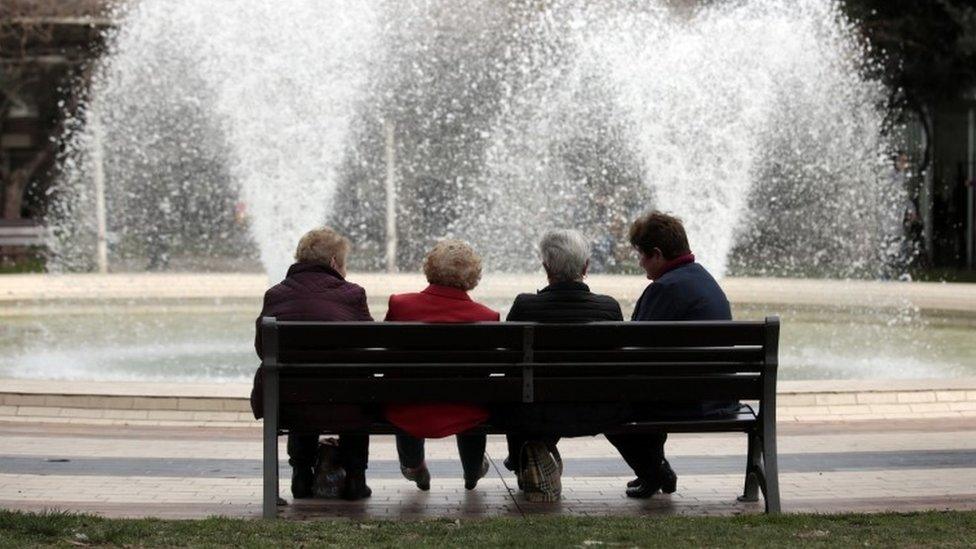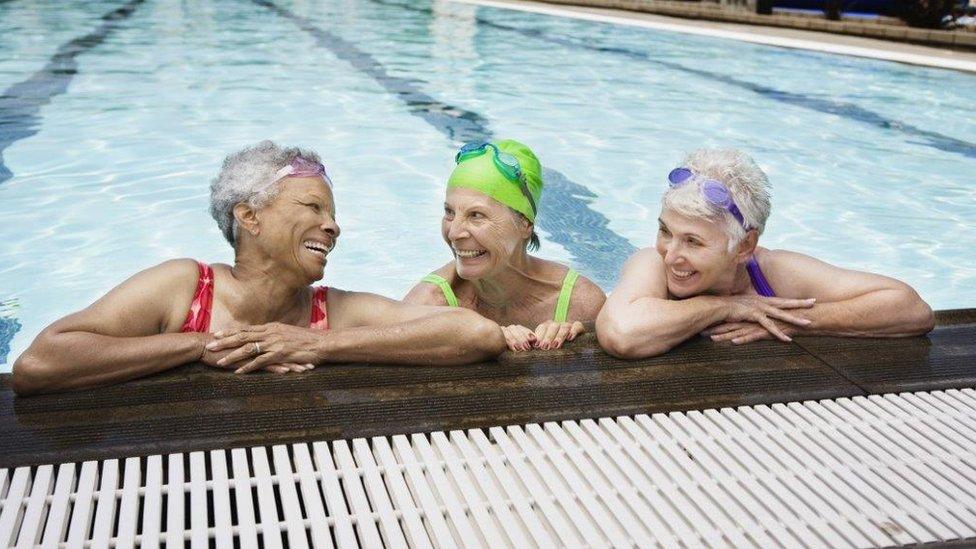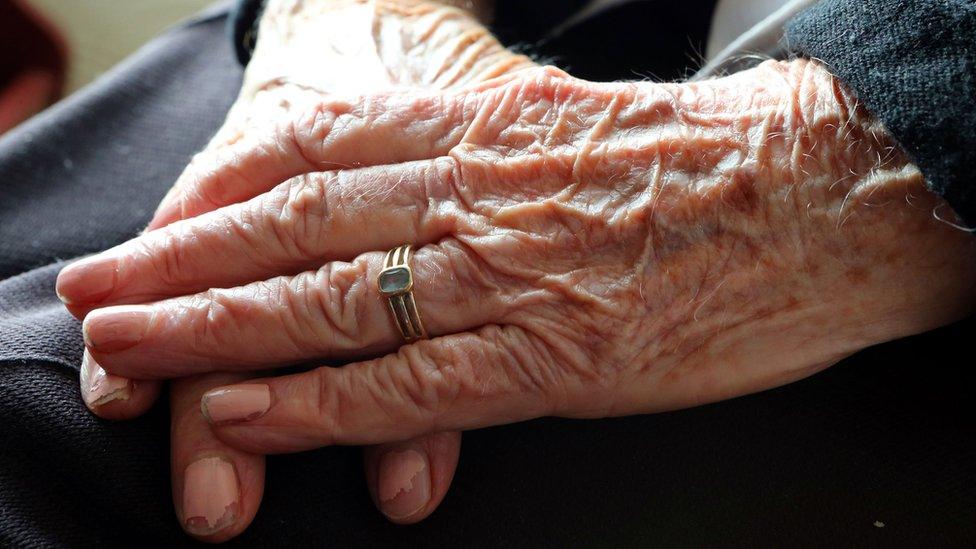Lifespan gap 'widening between rich and poor'
- Published

Lifespan inequalities between rich and poor have worsened since the 1990s, say researchers
The gap between the lifespans of rich and poor people in England and Wales is rising for the first time since the 1870s, researchers have suggested.
Everyone is living longer but rich people's lives are extending faster, the City University London study says.
Better life expectancy narrowed the gap in the early 20th Century but this trend reversed for men in the 1990s.
Author Prof Les Mayhew from Cass Business School said the difference was mainly due to "lifestyle choices".
Based on figures from the Human Mortality Database, external, researchers measured the differences in age between the youngest 10% of adult deaths and the oldest 5%.
From 1870 to 1939 the gap steadily closed, the report said, external.
"Everyone benefited from improvements in clean drinking water, better housing, higher incomes and better health," said Prof Mayhew.
After 1950 there were further rises in life expectancy - though inequalities in lifespan persisted rather than narrowing further.
But in the 1990s lifespan inequalities actually worsened, particularly for men, for the first time since the late 1870s, say the researchers.
They found that for men who died in 2010 aged over 30:
the oldest 5% reached an average age of almost 96
but the youngest 10% died at an average age of just over 62 - more than 33 years younger
By 2009 this longevity gap was 1.7 years greater than it had been at its narrowest in 1993
For women who died aged over 30 in 2010:
the oldest 5% reached an average age of just over 98
the youngest 10% died at an average age of just over 67 - a longevity gap of 31 years
For women this gap was narrowest in 2005
Commenting on the data, Prof Mayhew said: "This is partly due to some men now living to exceptionally old ages and in many cases equalling women - but at the other end of the distribution there has been a lack of progress."
Harmful choices
The researchers attributed the widening disparity to poor lifestyle choices.
"Many of the big gains from public health improvements are in the past and personal choices are now much more important," the report says.
"Men in lower socio-economic groups are the most likely to make damaging lifestyle choices.
"They put themselves in harm's way on average more than women do - they smoke more, drink more and there are periods in their lives when they partake in riskier activities," say the authors.

Wealthier, more educated people find it easier to adopt healthier habits, the authors suggested
The authors suggest lack of wealth is not directly responsible for the difference, but the poorest groups are more likely to suffer the cumulative effects of decades of poor lifestyle choices and income inequality - while wealthier, more educated people may find it easier to adopt healthier habits.
The authors say the negative health outcomes of smoking, excessive alcohol consumption, poor diet and lack of exercise "are disproportionately associated with the poorest in society".
They say it is vital to encourage healthier lifestyles and to counter pressure on individuals from "exposure to advertising, their communities and peer groups".
'Worrying'
Baroness Sally Greengross, chief executive of the International Longevity Centre, said the figures were "particularly worrying".
"Preventing inequalities in ill health and disability must be a priority for policy action," she said.
A Department of Health spokeswoman said everybody should have the opportunity to have a long and healthy life.
"The number of workless households is at a record low and we know that economic security can provide the foundation for better physical and mental health.
"We have shown that we are willing to take tough action to protect the public's health."
- Published30 April 2015

- Published11 December 2015
